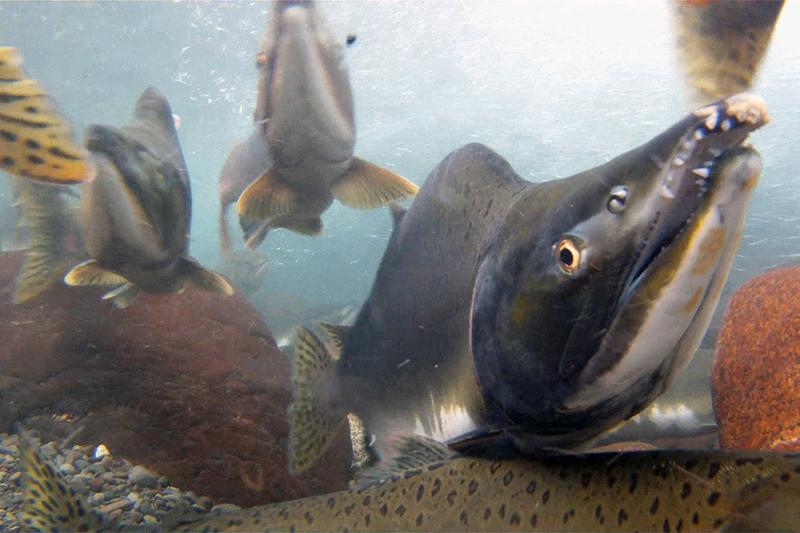NOAA scientists are on a 40-day survey in the Gulf of Alaska to learn more about salmon on the high seas. They’ll be studying all five species of Pacific salmon—Chinook, coho, sockeye, chum, and pink—to learn about what happens during the period they spend in the ocean. It’s the least-understood phase of their life cycle, and one that is becoming more important as ocean conditions are changing. These changes make it difficult for managers planning sustainable fisheries for future generations.
Laurie Wietkamp is one of two lead scientists on the survey. In this video, she discusses the survey and what they hope to find and how it will benefit managers, fishers, and coastal communities.
Salmon spend the first phase of their lives in freshwater before moving to the ocean, then return to freshwater to spawn. The number of fish returning to spawn has become less predictable—and fewer have been returning overall—due to climate change.
This is important because many salmon populations in the Pacific Northwest are threatened or endangered, and we’re trying to recover them. Changes to salmon populations also affect the livelihoods of the many people involved in the fishing industry. They also affect tribes in the United States and First Nations in Canada that rely on subsistence fishing; some have been fishing salmon for thousands of years.


